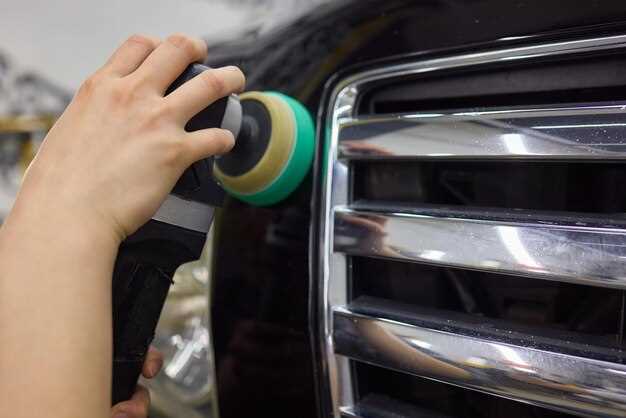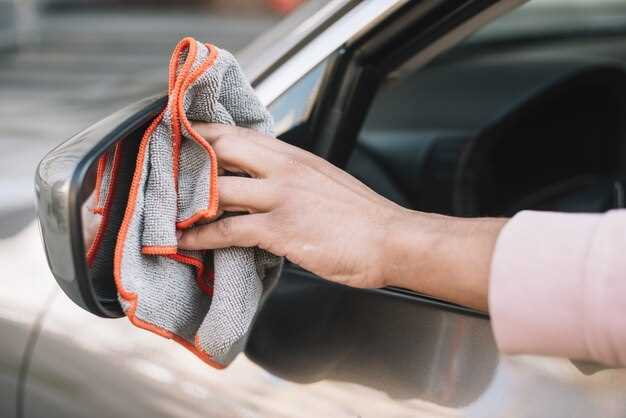
Polishing your car can dramatically enhance its appearance, restoring that showroom shine and providing a protective layer against environmental factors. However, many car enthusiasts make common mistakes during the polishing process that can lead to significant damage to the vehicle’s paintwork. Understanding these pitfalls is essential for achieving the best results without compromising the integrity of your car’s finish.
One of the most prevalent errors is over-polishing, which can strip away the clear coat, leading to dull spots and increased susceptibility to scratches and oxidation. This mistake often stems from the misconception that more polishing equals better results. In reality, excessive polishing can produce the opposite effect, resulting in a compromised paint layer that may require expensive repairs or a complete repaint in the long run.
Avoiding common car polishing mistakes is crucial not just for aesthetics, but also for maintaining the value and longevity of your vehicle. Being aware of these pitfalls will help you achieve a flawless finish while safeguarding your car’s exterior. In this article, we will discuss the primary mistakes made during the polishing process and how to prevent them effectively.
Understanding the Risks of Over-Polishing Your Vehicle

Over-polishing your vehicle can lead to significant damage to the paint, which may not be immediately visible. One of the primary risks associated with over-polishing is the reduction of paint thickness. Vehicle paint is made up of several layers, and excessive polishing can wear down these layers, exposing the base coat or primer underneath. This not only diminishes the vehicle’s appearance but also increases its susceptibility to rust and corrosion.
Another consequence of over-polishing is the potential for creating swirl marks or holograms on the surface. This occurs when the polishing pad becomes contaminated, or when improper techniques are employed during the polishing process. These imperfections can be difficult to correct and may require additional polishing or even repainting.
Additionally, frequent over-polishing can lead to a cloudy or dull finish. This happens when the clear coat begins to degrade due to excessive friction and heat generated during the polishing process. A deteriorated clear coat not only looks less appealing but also fails to provide adequate protection against environmental elements such as UV rays, dirt, and debris.
Over-polishing can also be a time-consuming and costly mistake. Once the paint has been compromised, rectifying the issue may require professional intervention, which can include repainting or extensive detailing work. It’s crucial to balance the desire for a glossy finish with the health of the paint to maintain the vehicle’s aesthetic and longevity.
To avoid these risks, it is essential to follow manufacturer recommendations and use appropriate polishing products and techniques. Regular maintenance and gentle care can preserve the paint’s integrity and keep your vehicle looking its best without the drawbacks associated with over-polishing.
Identifying Signs of Paint Damage During Polishing
When polishing your car, it is crucial to be vigilant for signs of paint damage. Over-polishing can lead to irreversible harm, making it essential to recognize problematic indicators early. One prominent sign is the appearance of the clear coat becoming dull or hazy. This change indicates that the top layer of paint has been excessively abraded, and further polishing may compromise the underlying color coat.
Another critical sign is the presence of swirl marks, which are often a result of using improper techniques or abrasive materials. If these marks become more pronounced during the polishing process, it may suggest that you are over-polishing specific areas. Additionally, be mindful of any color transfer on your polishing pad, which indicates removal of the paint and a potential issue with thinning layers.
Inspect the surface for areas that feel rough or uneven to the touch after polishing. These imperfections can suggest that the paint has been scuffed or scratched, pointing to over-aggressive polishing techniques. Pay attention to different sections of the vehicle as well; if certain areas seem to show signs of wear faster than others, they may have been improperly treated.
Lastly, if you notice any flaking or peeling of the paint during or after polishing, it signals significant damage. Addressing these issues promptly can save you from further complications. Choosing the right products and methods will help maintain your car’s finish and prevent these types of damage.
Choosing the Right Tools and Products for Safe Polishing

Selecting the appropriate tools and products for car polishing is crucial to achieving a flawless finish while minimizing the risk of damage. The first step involves understanding the type of paint and surface condition of your vehicle. For vehicles with soft or easily damaged paint, it is advisable to choose a mild polishing compound that is less abrasive. Using harsh products on sensitive surfaces can lead to over-polishing, which may remove too much paint and create permanent imperfections.
When it comes to tools, a dual-action polisher is often recommended for beginners. This tool provides a safer polishing experience by combining orbital and rotary motion, reducing the likelihood of damaging the paint. Foam pads are preferable over wool pads for most applications, as they offer better control and are less aggressive on the surface. Additionally, ensure that the pad is clean and in good condition before use to avoid inflicting surface scratches.
Choosing the right polishing product is equally important. Many brands offer dedicated formulas for different purposes–such as cutting, polishing, or finishing–each tailored to achieve specific results. Always start with a product designed for your car’s paint type and work in manageable sections to control the polishing process effectively. Remember that less is often more; applying too much product can lead to build-up and increased risk of over-polishing.
Before starting, it’s advisable to test your chosen product and tool on a small, inconspicuous area. This way, you can assess how they interact with your vehicle’s paint and make adjustments if necessary. By being mindful of your choices, you can enhance your car’s appearance without compromising its integrity.






